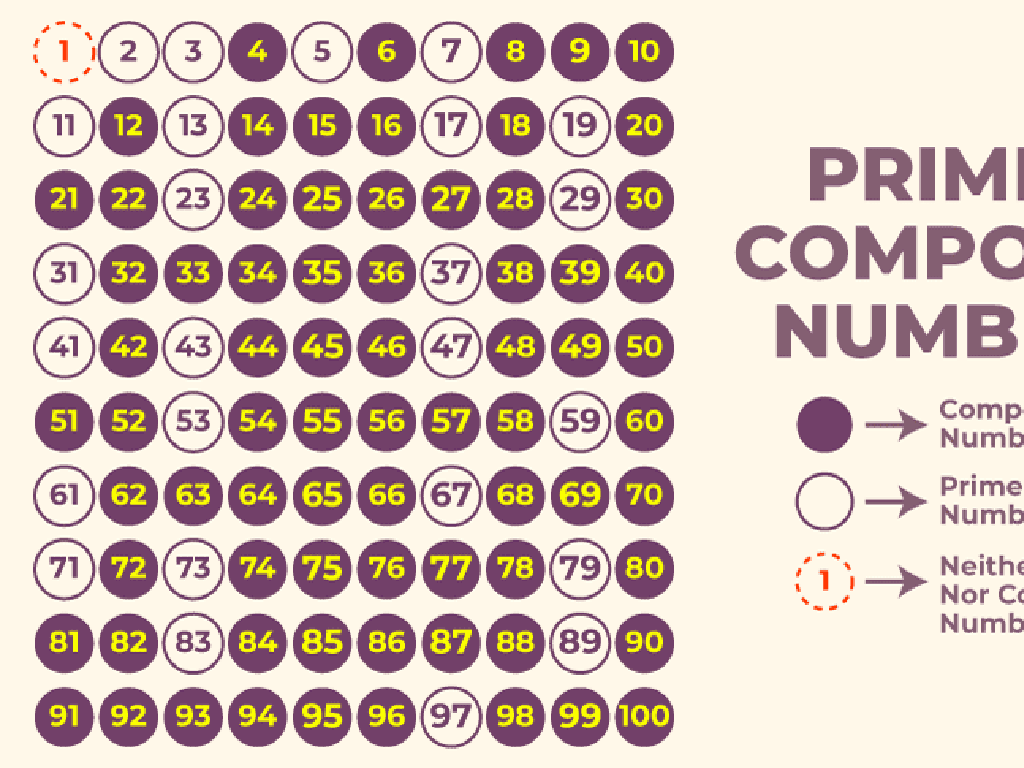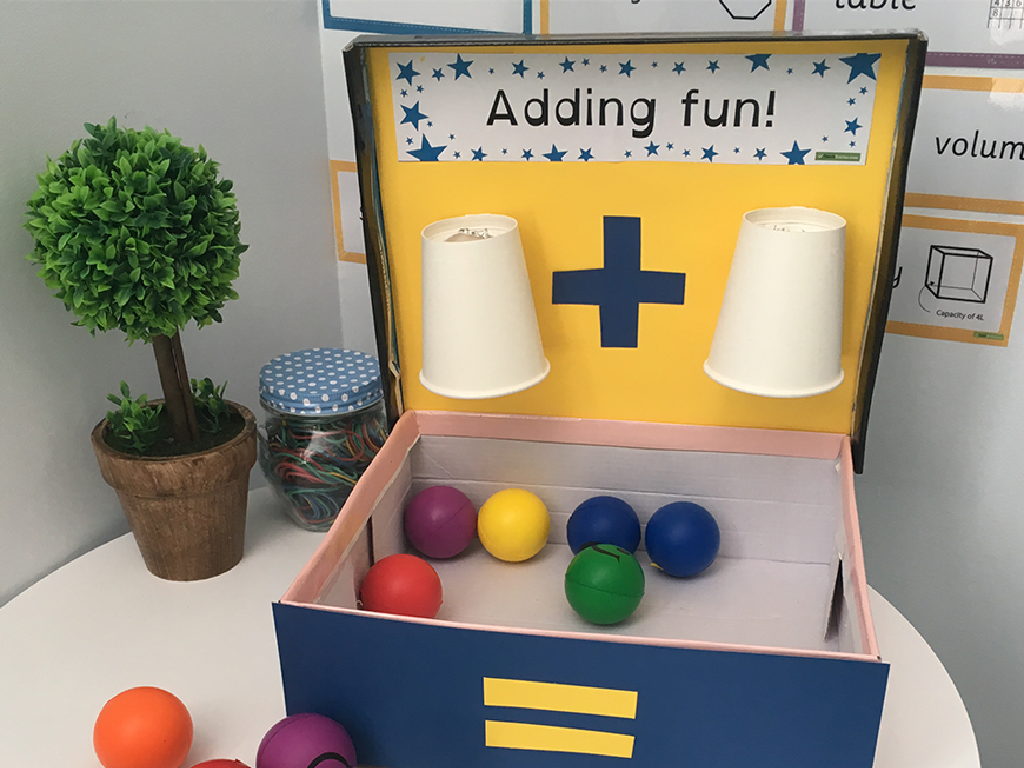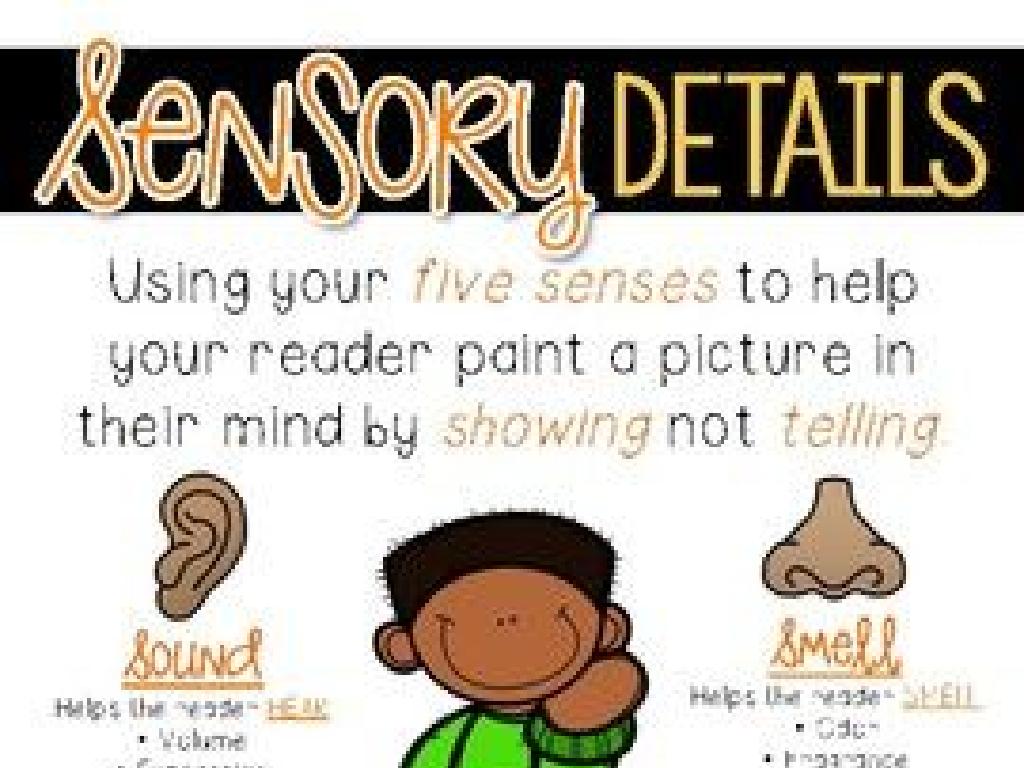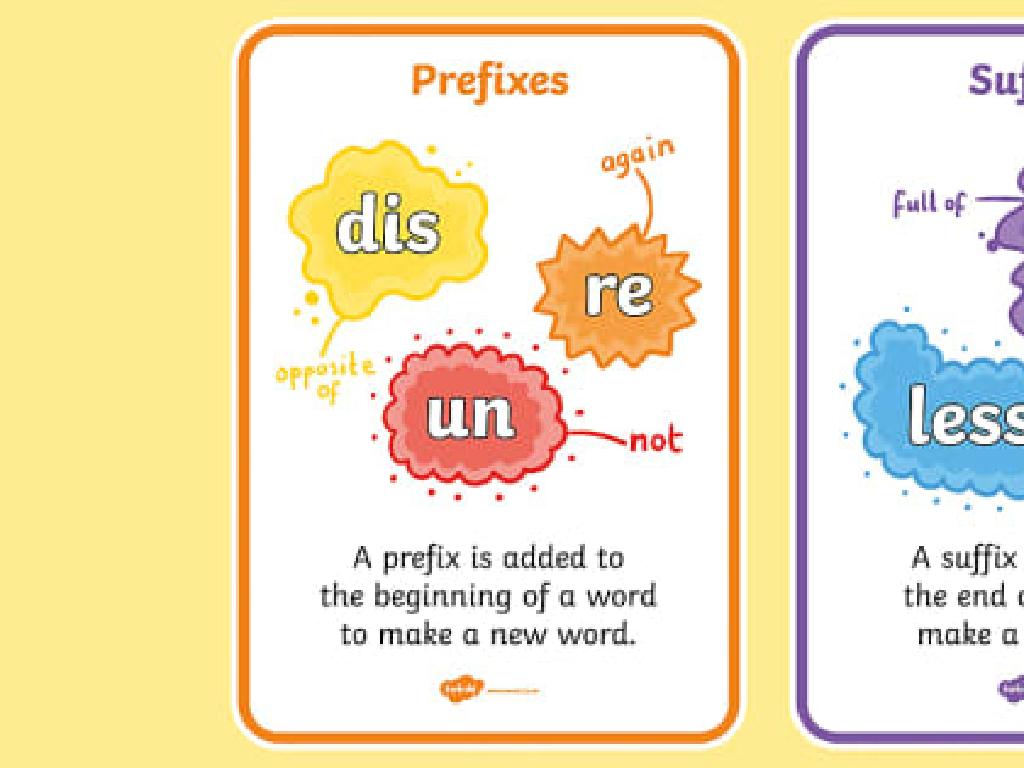Round To The Nearest Ten
Subject: Math
Grade: Second grade
Topic: Estimation And Rounding
Please LOG IN to download the presentation. Access is available to registered users only.
View More Content
Rounding to the Nearest Ten
– Learn to round numbers
– Steps to round to the nearest ten
– Look at the ones place to decide
– Why rounding is useful
– Helps estimate and simplify math
– Practice rounding with examples
– Use numbers like 24, 37, and 58
|
This slide introduces the concept of rounding numbers to the nearest ten, which is a fundamental skill in second-grade mathematics. Start by explaining what rounding means and why it’s important. Teach the students the basic steps: look at the ones digit to determine if the number rounds up or stays the same. Emphasize that rounding makes numbers easier to work with, especially when estimating sums and differences. Provide several examples for the students to practice, such as rounding 24 to 30, 37 to 40, and 58 to 60. Encourage the students to explain their thought process as they round each number.
Understanding Rounding
– Rounding makes numbers simpler
– Keeps value close to the original
– Results are less accurate, but useful
– For example, 67 rounded to the nearest ten is 70
– Easier numbers for quick calculations
– Like estimating the total cost of toys
|
This slide introduces the concept of rounding to second-grade students. Rounding is a fundamental math skill that simplifies numbers, making them easier to work with for quick calculations, estimations, and mental math. It’s important to convey that while the rounded number is less precise, it is still very close to the original value, which is why it’s useful in everyday situations. Use examples like rounding prices to the nearest dollar when shopping or estimating the time needed to complete a task. Encourage students to think of rounding as a way to make numbers friendlier for our brains to handle quickly.
Rounding to the Nearest Ten
– Look at the ones place digit
– Ones digit 4 or less, round down
– If a number ends in 1-4, it goes down to the nearest ten
– Ones digit 5 or more, round up
– If a number ends in 5-9, it goes up to the next ten
– Practice with examples
– Try 34 and 87: 34 rounds to 30, 87 to 90
|
This slide introduces the concept of rounding numbers to the nearest ten, which is a fundamental skill in second-grade mathematics. Start by explaining the importance of the ones place when rounding. Provide clear guidelines: numbers ending in 1 to 4 round down to the previous ten, while those ending in 5 to 9 round up to the next ten. Use examples like rounding 34 (which rounds down to 30) and 87 (which rounds up to 90) to illustrate the concept. Encourage students to practice with additional examples and to explain their thinking process. This will help solidify their understanding of rounding numbers.
Rounding to the Nearest Ten
– Round 34 to nearest ten
– 34 is closer to 30 than to 40, so it rounds down to 30.
– Round 87 to nearest ten
– 87 is closer to 90 than to 80, so it rounds up to 90.
– Let’s practice rounding
– We’ll do some examples together in class!
– Understand why we round numbers
|
This slide introduces students to the concept of rounding numbers to the nearest ten. Start by explaining that rounding helps us estimate numbers quickly and makes them easier to work with. Show the students how to round numbers by finding which ten a number is closest to: if it’s 5 or above, we round up; if it’s 4 or below, we round down. Use the examples provided to illustrate this point, and then engage the class with a few practice rounds. Encourage students to think about why rounding might be useful in everyday situations, such as estimating costs or distances.
Let’s Practice Rounding to the Nearest Ten!
– Observe the given number
– Check the ones place digit
– If it’s 5 or more, round up. If it’s less than 5, round down.
– Decide to round up or down
– Say the rounded number out loud
|
This slide is designed for an interactive class activity to practice rounding numbers to the nearest ten. Display a number to the class and guide them to look at the ones place to determine whether to round the number up or down. If the ones digit is 5 or more, the number rounds up to the next ten; if it’s 4 or less, it stays at the current ten. Encourage students to participate by rounding the number out loud. Provide immediate feedback and reinforcement. Possible numbers for practice could be 34, 67, 82, and 15. This exercise will help solidify their understanding of the rounding concept.
Class Activity: Rounding Race
– Split into teams for a rounding challenge
– Each team receives numbers to round
– Round each number to the nearest ten
– If a number ends in 1-4, round down. Ends in 5-9, round up.
– See which team is the fastest
|
This activity is designed to make learning about rounding to the nearest ten fun and interactive. Divide the class into small teams, ensuring that each team has a mix of abilities so everyone can participate. Provide each team with a set of numbers, either on flashcards or a worksheet. Use a timer to add excitement and give the teams a set amount of time to round as many numbers as they can. After the activity, review the answers as a class to reinforce the rounding concept. Possible variations of the activity could include a relay race where students take turns rounding numbers, or a ’rounding bee’ where students round numbers individually in front of the class.
Rounding Mastery: Great Job!
– Congratulations on learning rounding!
– Rounding makes numbers simpler
– Like 64 becomes 60, easier for quick math!
– Practice makes perfect
– Try with different numbers to master it
– Aim to be a rounding champion!
|
This slide is meant to congratulate the students on their effort and progress in learning how to round to the nearest ten. Emphasize the practicality of rounding for making complex calculations simpler and encourage continuous practice to reinforce their skills. Remind them that rounding is not just a math exercise, but a useful tool in everyday life, such as when estimating time or money. Celebrate their achievements and motivate them to keep practicing to become proficient, making them feel like champions of rounding.






